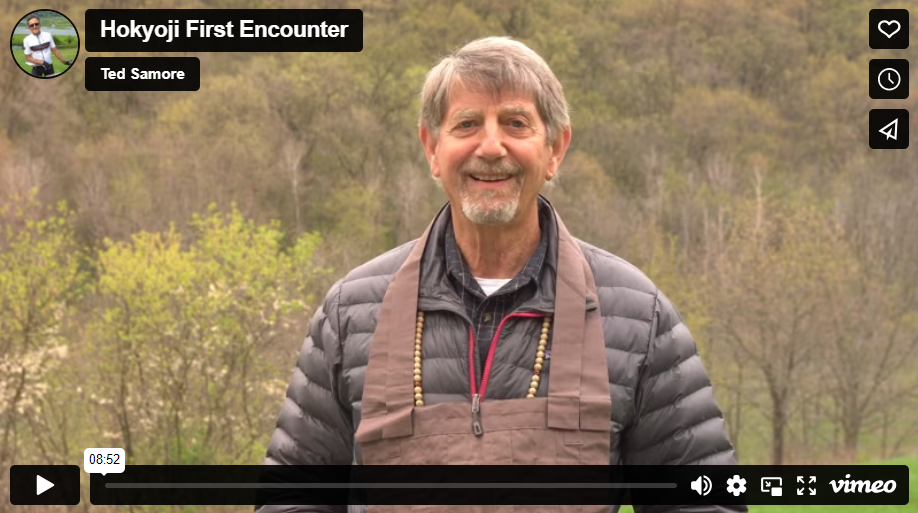
Hosho Jishi is Peter Coyote’s Buddhist name, which translates to Dharma Voice, Compassionate Warrior.
Zen Buddhism
Coyote had first discovered Zen in his teens via the works of Jack Kerouac, Gary Snyder, and other Beats. Coyote met Snyder with the Diggers and was impressed with Snyder’s “gravitas and elegance, his care and deliberation”.
Beginning in 1975, Coyote undertook meditation practice and eventually became a dedicated practitioner of American Zen Buddhism, moving into the San Francisco Zen Center. He was later ordained a lay priest in the Sōtō tradition and was ordained as a Zen Priest in 2015. His transmission ceremony in 2016 signified the completion of his work iwth Chikudo Lewis Richmond, his Zen teacher.
Coyote performed audiobook recordings of Shunryu Suzuki‘s Zen Mind, Beginner’s Mind and Paul Reps‘s Zen Flesh, Zen Bones, as well as narrating the documentary Inquiry into the Great Matter: A History of Zen Buddhism.
50 Dharma Talks
Visit Peter’s Youtube channel to watch his collection of Dharma talks, given from near the start of the global pandemic, April of 2020, until April of 2022. In these talks, Peter would do 15 minutes of meditation together and then talk.
These talks have been edited to remove the meditation period and so contain only the teachings.
The Zen of Peter Coyote
Photo by A. Jesse Jiryu Davis
This 2020 article was written by Jennifer Keishin Armstrong, a New York Times bestselling author specializing in culture and entertainment. Lion’s Roar Magazine is an independent, bimonthly magazine that offers a nonsectarian view of “Buddhism, Culture, Meditation, and Life”.
Since his 2016 ordination, Coyote has been waiting for a teaching path to emerge that makes sense to him, that feels like an authentic expression of Zen in America.
It seems his real gift is inhabiting all of his roles all of the time: actor, Zen priest, narrator. Or perhaps a better way of saying this is that he does not separate them or distinguish among them. Every moment, he is just Peter Coyote, and Peter Coyote’s true expression often involves these elements: the grounding voice, the grounding to channel a character, the grounded presence.
“If I’m really in that moment, my emotions automatically adjust,” he says, describing the instant when his eyes meet the words on the page as he’s in front of the microphone. “There’s nothing I have to falsify. People tell me, ‘I really believe you.’ It’s because I’m always staying on the front edge of what I’m learning in my feelings. The other way I do it is by being conscious of breath. I let my stomach completely relax and start with a full set of air. Allen Ginsburg used to talk about ‘bop prosody.’ He used to talk about poems being floated on the breath. Every sentence, every phrase, everything is coming off the breath.”
This is how you get it right, without having read the script. This is how you get it right on the first take. This is how you get It! It! It! It!
In this film, Peter takes you to the Hokyoji Zen Practice Community, located on 105 acres of forested land in rural, Southeast Minnesota. “Quite a magical place,” he offers, as he recalls his first time visiting there. “This is it,” he recalls the late Zen teacher and Hokyoji founder Dainin Katagiri Roshi declaring when assessing the property. He presents not just a visit to the grounds, but a sense of their ambience, and a dharma talk as well as he reflects on the interconnection so easily found in nature. “When I’m looking at you,” he tells us, “I’m looking at the entire universe.”



